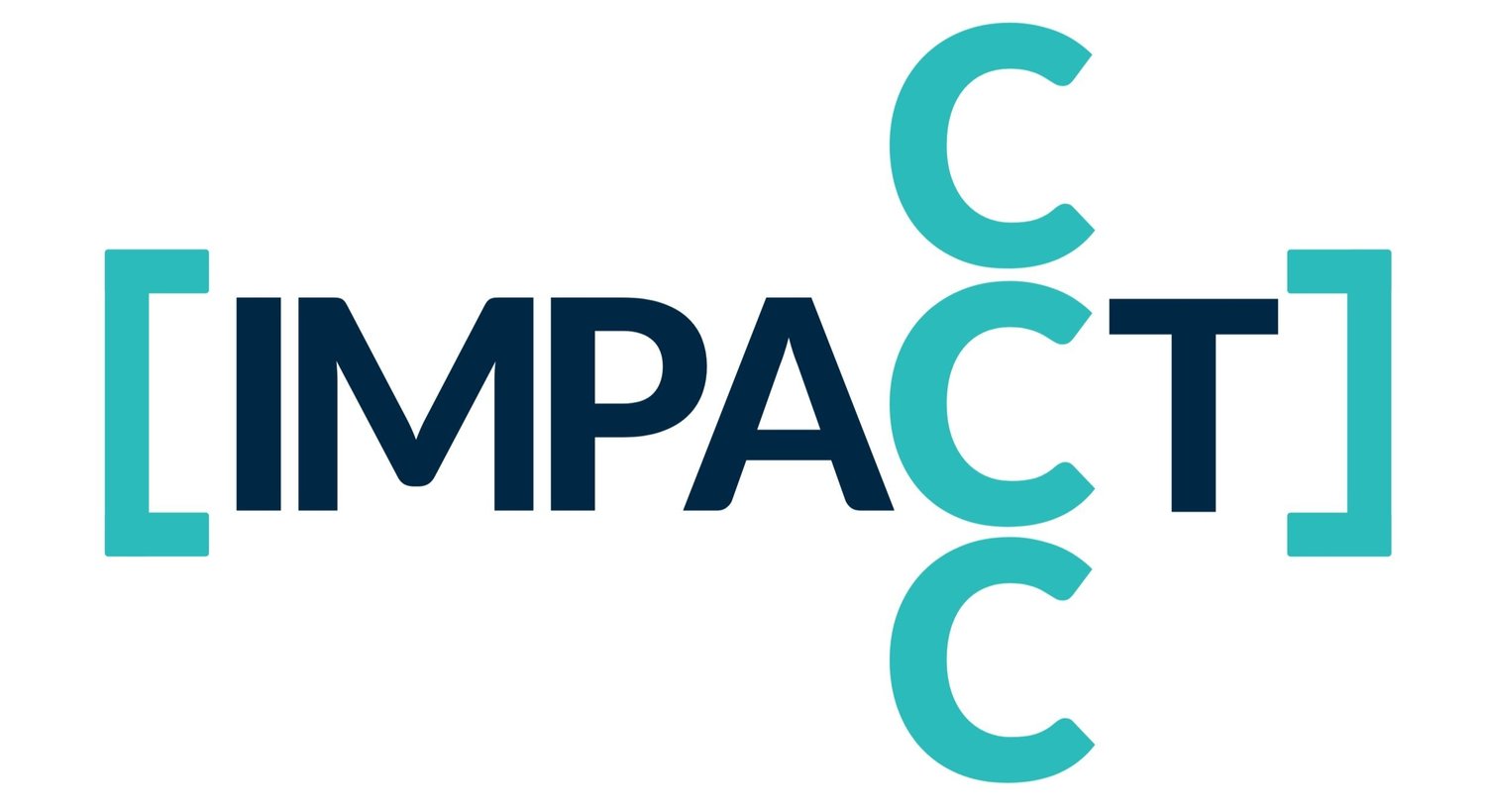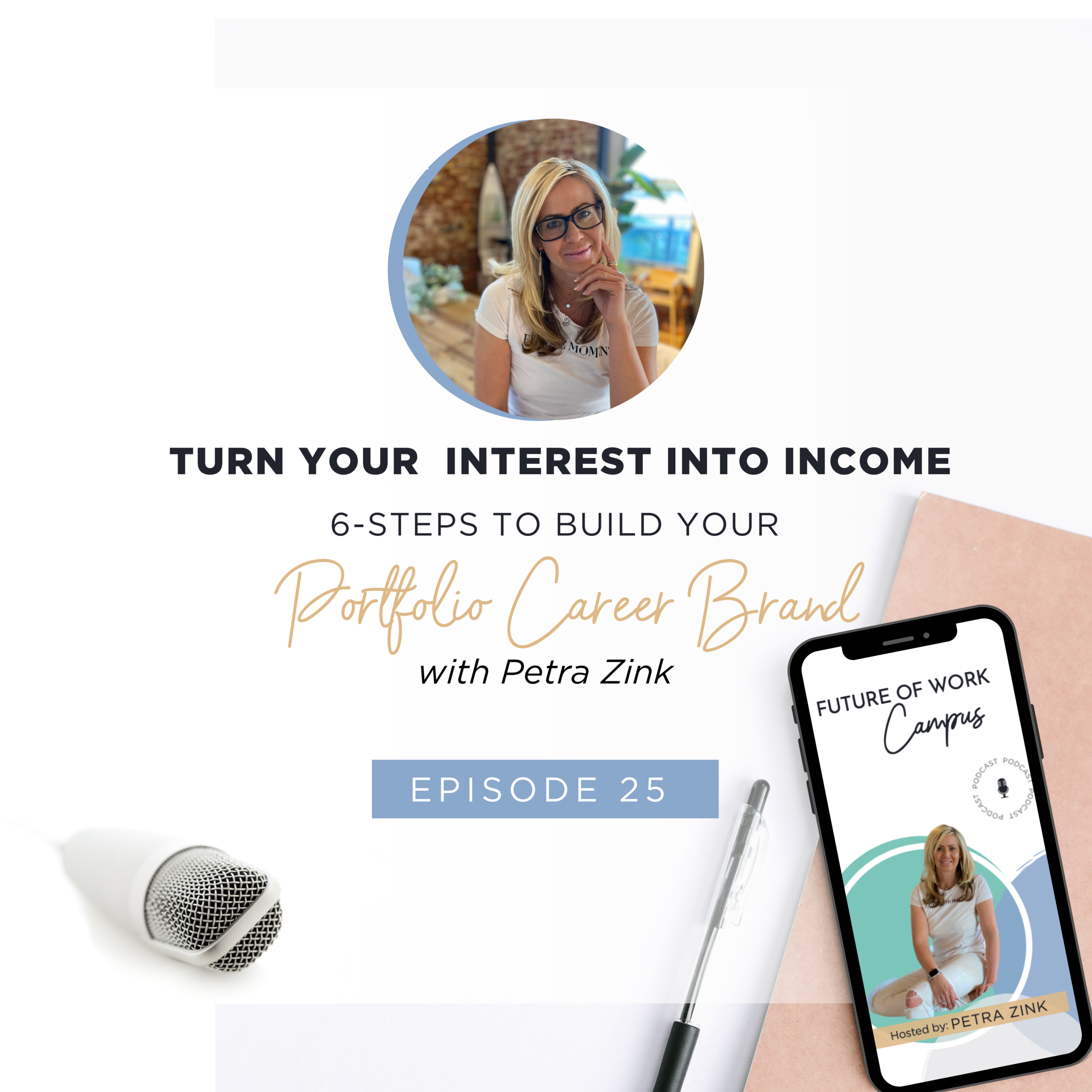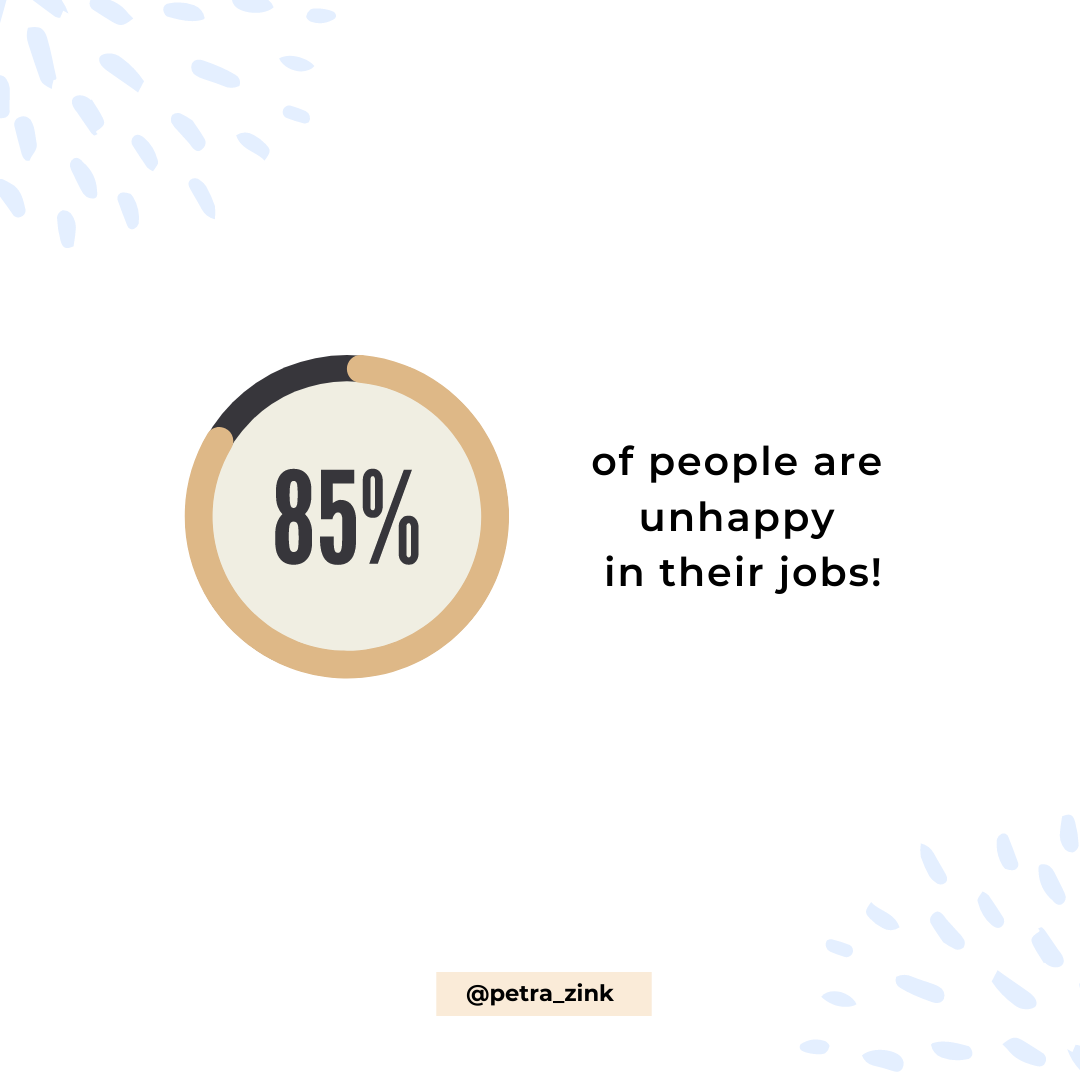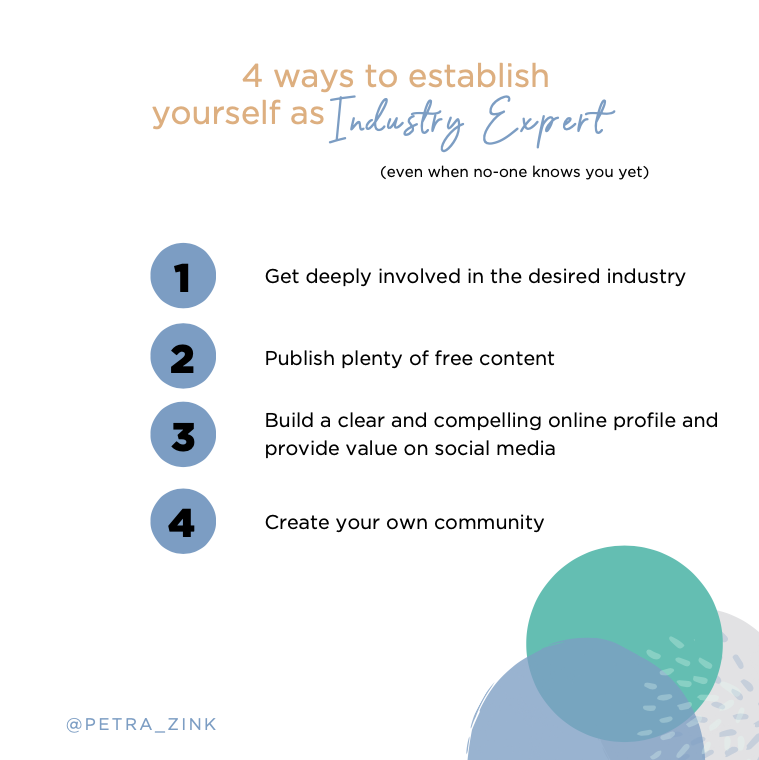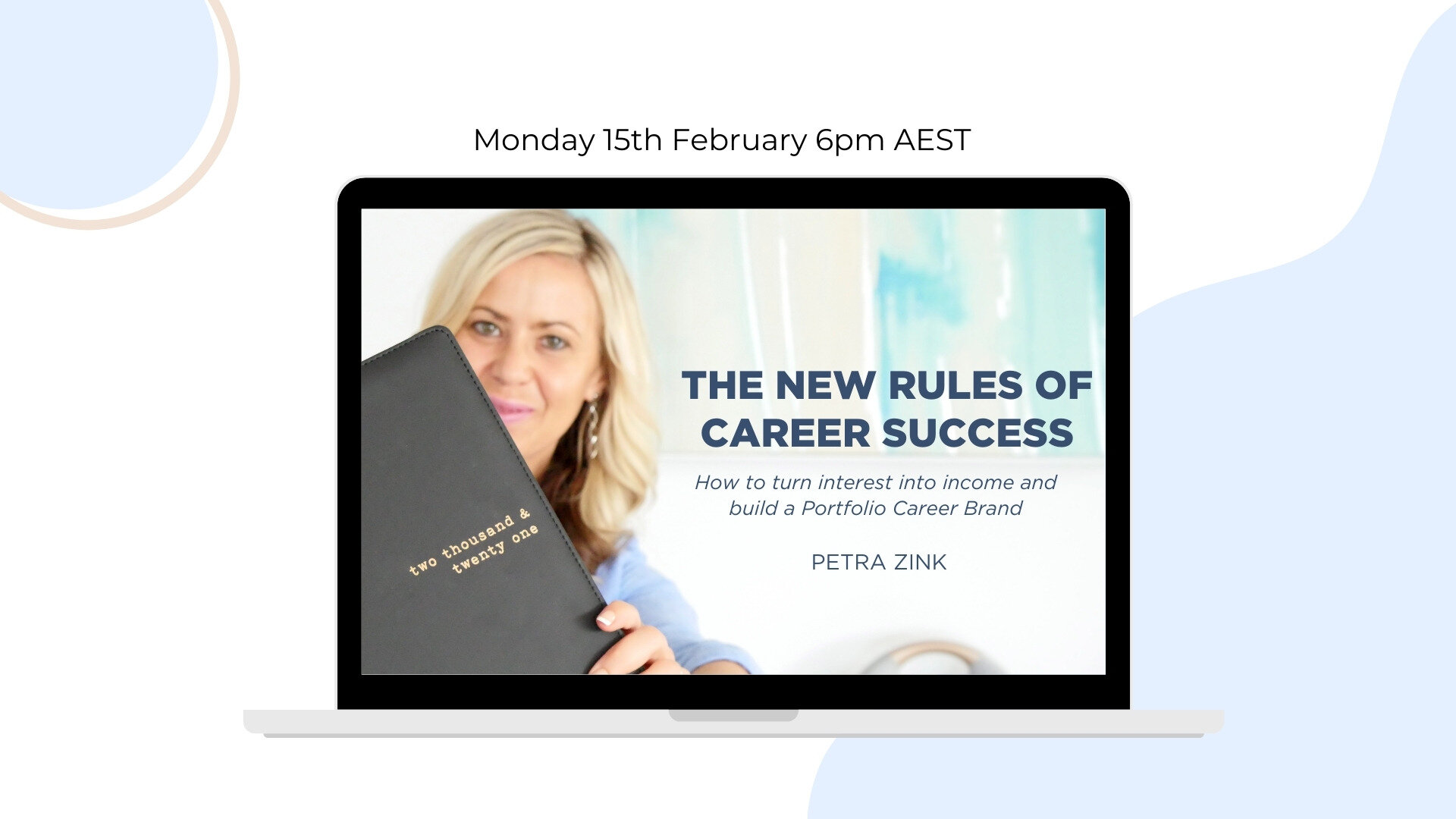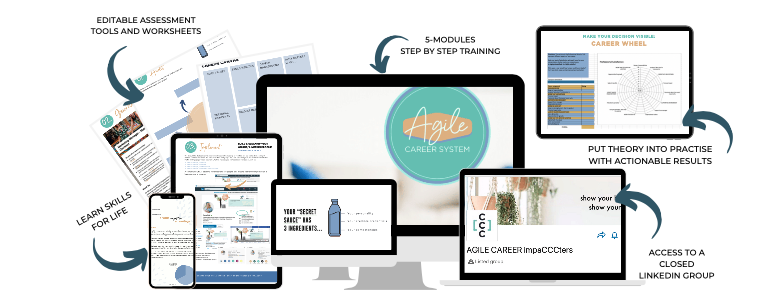How To Turn Your Interest Into Income & Build A Portfolio Career Brand in 6 Steps
Now I’ve said it before and I say it again: Now is not only the best time to build a career on terms but also a necessity. It’s about being able to use your strength, combining it with your interest and creating value so you get paid for it.
But still – according to a global poll conducted by Gallup uncovered that out of the world’s one billion full-time workers, only 15% of people are engaged at work. That means that a gigantic 85% of people are unhappy in their jobs.
This is a shocking number, given we spend around ⅓ of our lives at work. That’s around 90,000 of our waking hours in a lifetime.
I want to change this which is why in today’s episode you’ll learn how you can build a Portfolio Career and your Personal Brand around it – in 6 steps. And yes- despite the Future of Work being more fluid and not linear, I’ve developed all of my programs in an easy to follow step-by-step process because I love all things broken down.
And if you’re anything like me – you are driven to get things done, just need to know the right steps and the right order to make things happen!
Sounds like a plan? Then let’s dive in!
Yes- 85 whopping percent – this is the number of employees being unhappy in their roles.
Now why is this number so high?
Obviously there are a number of reasons like having a bad boss or unsupportive colleagues.
Being with the wrong type of people for the majority of the day is taxing. I know it very well – I’ve been in a few work environments where I just didn’t feel quite right or would gel with the people. Let’s be real - No one wants to spend time with someone they don’t like – or who doesn’t like them – least of all when that someone happens to hold some sort of authority over them.
Other reasons are:
Type of Work
Sometimes, we find ourselves doing any old job just to pay our way. Bills don’t pay themselves after all. However, not performing even just a good chunk of your day in your high performance zone, the intersection of where your skills and interest meet a challenge and you get the rewarding feeling when you master it. You want to be in flow state as this is what makes you want to be and do better. In the end, this is how you can fast track your career success the quickest- by knowing what value you can provide to others that is based on using your skills, interests and suits your personality.
Commute
Although the number of remote and flexible jobs has significantly increased over the las few months thanks to Covid-19, long commutes have been another reason for people being unhappy at work.
Boredom
Believe it or not- you can also get burnt out from being bored and not challenged enough. It happened to me a couple of times. The required skill level to master the role was very low compared to environments I’ve been in previously. I just lost interest and the drive to want to do good and that literally caused burn out. There was no feeling of accomplishment or excitement to work on the tasks.
Doing the same thing, especially tedious and laborious task day in and out without any learning and development opportunities cause many people to be unhappy at work.
Obviously there are many more reasons why people are disengaged at work and once you feel stuck and don’t know what else to do and/or are worried that you don’t have the required skills or experience to change jobs, this is where you get trapped and usually the downward spiral goes from there.
However, this is not today’s topic. We are here to talk about how you can turn things around and make your interest your income whilst fast tracking your career progression.
The answer: build a Portfolio Career and then your Personal Brand around it to make sense and not being seen as job hopper or someone who doesn’t make sense.
First things first - What’s a Portfolio Career?
Gone are the days when you leave school and get a job in a company that you spend the rest of your life in.
These days people don’t even spend their entire working lives in one field, let alone one company.
It used to be simple and very linear: You go to school, get a degree, start off on the bottom in a company, work your way up the corporate ladder and eventually retire – somewhere closer to the top.
Even if you didn’t necessarily wanted to get to the top- you had at least you had a reliable, steady job that you could count on.
And that’s still a thing and possible for some. However, in this fast changing world of work we’re living, following a linear career progression plan isn’t the answer anymore.
In fact - Having only one skill or one industry experience or one type of profession and with that, only one type of income stream, you leave yourself vulnerable.
If you work for only one company, there is a massive risk to it: from going bust to roles being made redundant to having a new manager or nasty colleagues to losing funding … you name it.
And this is where a portfolio career, which is essentially the exact opposite comes in:
It’s a way of working in different work engagements and across different fields.
It can be a mix of junior and senior roles. It’s a great way to not only finetune existing skills but also build a new skill set. This is also the power as this skill development fast tracks your career pivot or progression as you don’t have to be in a role for years and build your skill stack gradually. You do it simultaneously
You can be a combination of being employed, being a contractor, being a freelancer or all together.
You use different skill sets for the different jobs
You build a diverse network based on the various work environments
There are basically 2 types of portfolio careers you can build:
· Pursuing multiple but diverse roles at the same time, eg: digital marketers, teachers, board members and public speakers. They all require different skill sets and are applied in different engagements.
· Pursuing one type of one role but in various formats, eg: a project manager could be a full-or part time employee, works as a consultant for dedicated projects, teaches in higher education institution the Diploma of PM, speaks at conferences about PM etc.
There are a ton of benefits to a portfolio career like:
· Variation in the days and tasks
· Building a diverse network and learn from and with different people
· Learning and become highly proficient in multiple skills
· Being able to pivot careers much easier if the profession becomes irrelevant due to technology and or loss of interest for it
· Broader industry experience
· Being able to think laterally better due to hands on experience and insights what works and doesn’t in one industry/ profession and how it can be applied in another
Now let’s switch gears and talk about how we can change this!
First things first- the beauty of building and balancing a portfolio career is that it’s a graduate and evolutionary process and not an all in or out approach. And that applies to when you just get started but also when you’re already in the midst of it.
You work on a project, or volunteer for a few hours or gain some experience from shadowing etc. There is not much lost in case you realise the direction isn’t for you or you actually don’t enjoy the task or industry etc.
That means that there is also less risk involved to go into the ‘wrong direction’ because it’s just for a specific period or scope.
Let’s get started on how you can build your portfolio career brand in 6 steps:
Step 1:
You want to get clear on your goal and the purpose of building your portfolio career as this is the foundation of any next steps.
Do you want to pivot career and need to build a new skill set for it or do you want to fast track your career progression in your current field or do you want more versatility and diversity on your day to day?
This is also a good time to reflect on your current status and be honest with yourself what exactly the issue is that’s nagging you so you can avoid it in the future.
Step 2:
Once you’re clear about your end goal, you then want to clarify what the perfect portfolio looks like for you. How many hours do you want to work and what days?
Where is the best location for you to get your work done?
Step 3:
Get specific about the skill(s) you want to use
This step requires self-awareness and honesty with yourself. What are the skills you want to either learn, improve or both? Remember- simply because you can doesn’t mean you should. If you’re not entirely clear yet, make a list of all skills you’ve acquired over the years and put them in a simple matrix that tracks:
- What I’m good at and enjoy
- What I’m not so good at but enjoy
- What I’m good at and don’t enjoy
- What I’m not good at and also don’t enjoy
Despite it being such a simple exercise, it’s often already a massive eye opener for many.
Maybe you’ve heard of the curse of competency?
It means we’ve done a job so long or performed certain tasks forever but actually don’t enjoy it. But since it’s easy, its predictable and with that, safer which is why most people get stuck there.
However, designing your own career means you’re picky and mindful which skills you want to focus on.
You want to get a complete picture of your skill set, so review:
· your education
· any previous roles
· the industries you’ve worked in and also
· any hobbies you’ve pursued.
You want to find the common thread there:
· Why did you choose it in the first place?
· What did you enjoy about them (or not)?
· What was the nature of the role of environment?
· Who are the people you like to work with?
· What you enjoy doing outside of work.
Step 4:
Time to do some research!
Now you know what you want and what you can bring to the table- it’s time to match it with demand.
It’s always about supply and demand because simply you enjoy doing something or are good at, doesn’t mean others would pay for it. Otherwise, I’d be a professional cookie dough eater. Last time I checked- it doesn’t pay the bills.
Best ways to do your research is a combination of:
- Desk research which incl finding information about the industry or profession on websites, LinkedIn, job profiler sites, career fairs, researching people’s profiles
- Informal interviews which is more active and specific as you connect and chat with people who are already in the role, company or industry you want to get into.
- Volunteering which is already getting hands on and experience what it’s like to work in that profession or industry.
What the later 2 forms have in common is it’s proximity principle – meaning you gain insights due to being close to the action, person or environment rather than just reading or learning about it from a distance.
Now it’s time to implement!
Step 5
… is about selecting options you want to pursue further.
You want to complete the sections with role requirements and skills you already have. This exercise is also great to identify possible gaps you need to work on.
The good thing with setting up a portfolio career is that you can learn new skills whilst getting paid for it.
It may be because you work on a project that uses a certain software or tool you haven’t worked on or you apply an existing skill in a different context which again, is skill development.
For example writing for a company’s blog vs for a high traffic website is different. Whilst you still use the same skill set, you gain new skills which you can claim.
Step 6
Bring it all to life and build a Brand that communicates your value proposition, online and offline.
This is where you update your marketing material, meaning crafting your new value proposition and include it on your LinkedIn profile, your CV, even consider setting up your own website and create your own digital footprint, start publishing content aligned with what you want to be known for and of course build a network around this.
The most powerful and efficient way for you to get known – especially when you want to get into a new field – is by telling your story and connecting the dots by bringing people on your journey.
What made you change, why are you the best for what you want to do and how you do it based on your background.
Now if creating a portfolio career does sound attractive and you’d enjoy having multiple roles, building a diverse skill set and being the boss of all things but sounds a bit too daunting and overwhelming – then I have great news for you!
I’m running a free masterclass on the 15th February where we actually go through the exercises.
I’ll also give you also a ton of examples and actionable steps you can take right away.
Also a heads up- I’ll be opening the doors very soon for the 5-weeks Agile Career Course again where we work together live on your career progression.
It’s like me being your personal career coach but you also get a community and step-by-step instructions to keep moving in the right direction. If stepping up in your career is a priority for you in 2021 and you’re tired of trying to figure things out – then hop on the wait list.
